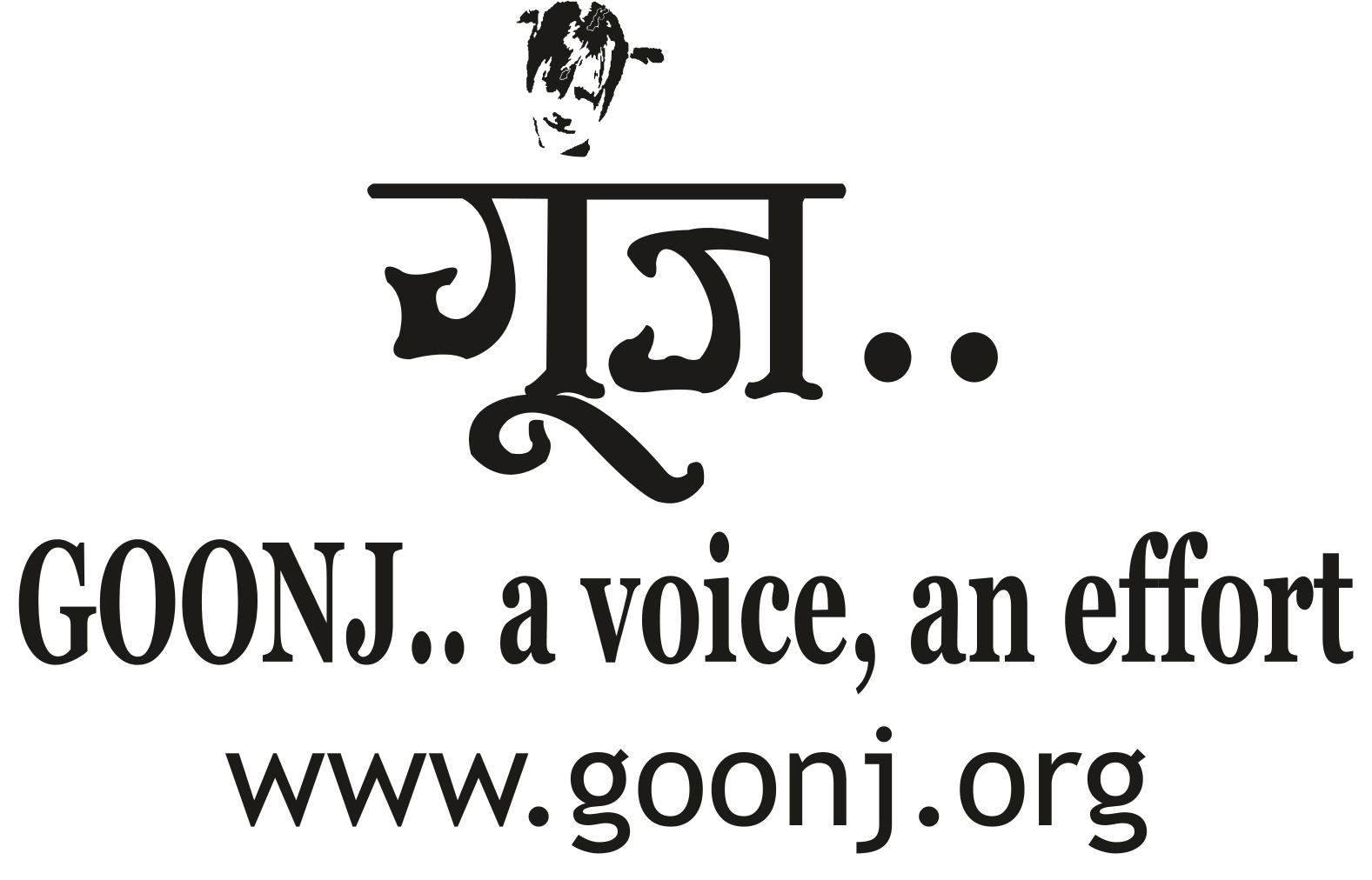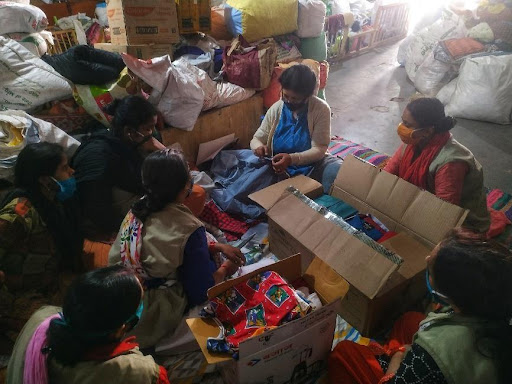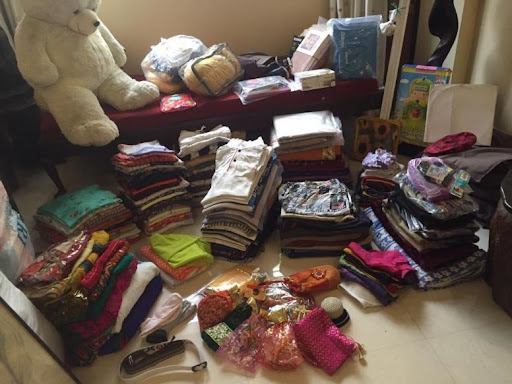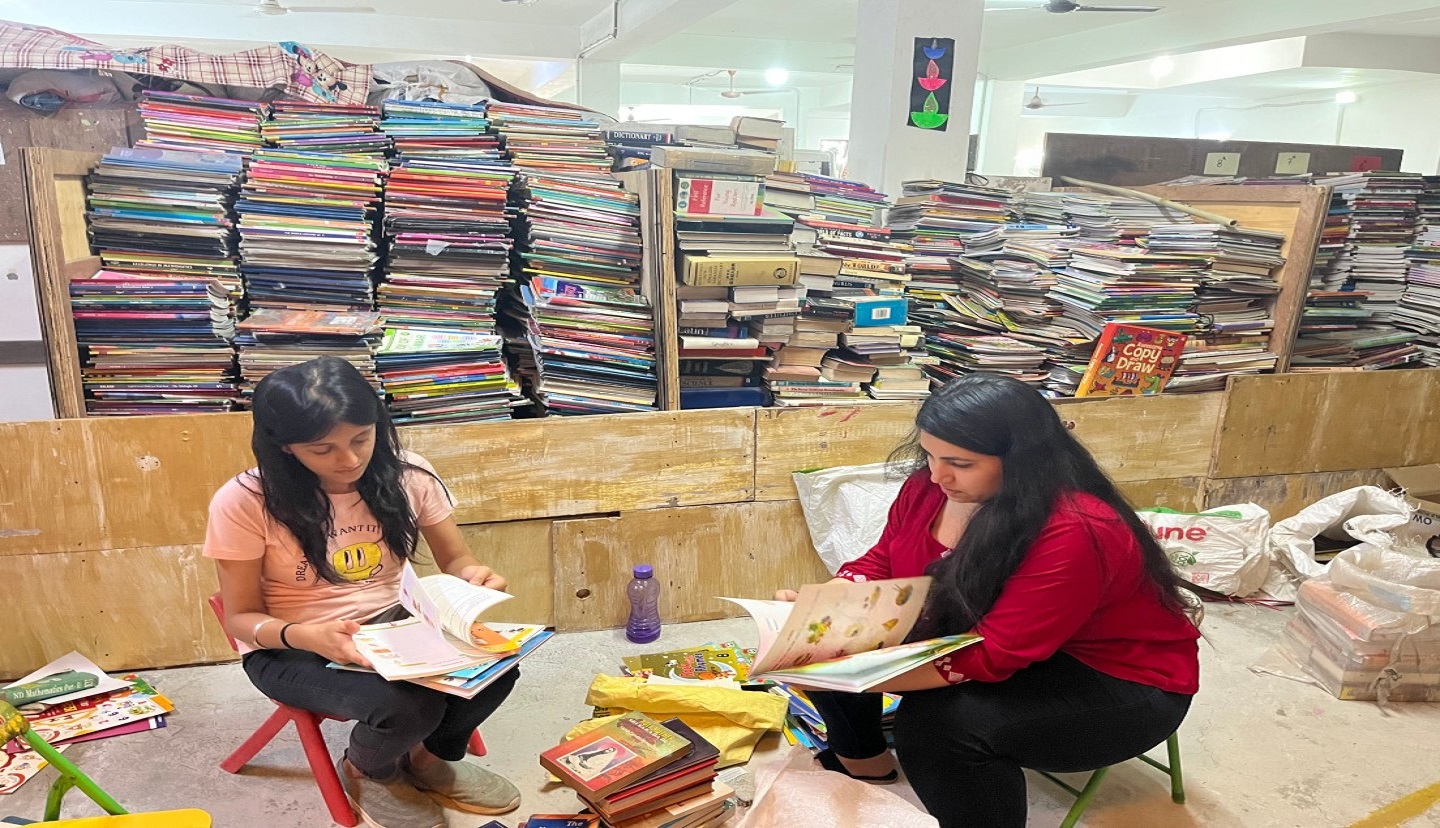“Tell me and I’ll forget; show me and I may remember; involve me and I’ll understand.”
Isn’t that what education is all about? To make our children understand life.. This story shares some simple ways in which we involve kids and get them to understand the challenges of the world they are going to inherit. This story shines a light on how the contributing school children are the bigger receivers in the whole act of giving their underutilized learning material for their rural counterparts.
The shortcomings in village schools are obvious – missing toilets, libraries, absence of basic school material and a long list of other gaps. BUT ..does the abundance of all these in urban schools automatically make the children more responsible, sensitized and aware citizens? In the past many years Goonj has engaged with children from hundreds of city schools under its ‘School to School’ (S2S) initiative. In the process, these kids have learnt some important life lessons on compassion, empathy and taking action for change.
Many years ago when we first talked about S2S at a school assembly, in Faridabad (Haryana), the excitement among the children and teachers was memorable. Most couldn’t believe that for many kids in villages a water bottle can become a key point in deciding whether one goes to school or not! Over the years, our teams have conducted countless such sessions in urban schools all over the country but the enthusiasm and disbelief remains the same. Most urban children understand the challenge when we explain that in villages as children walk for 3-5 kilometers one way with no assurance of proper drinking water or toilets, a water bottle does become an issue, around this basic need!!
The heartening bit is how this insight brings urgency in what the urban kids want to do for their rural friends. So why are these sessions a huge learning ground for urban school children? Most of these children know little about the lives and challenges of their counterparts in the far-flung villages of India. When we portray a picture of life of children in far-flung rural areas, it makes the urban kids reflect on their own lives differently. This reflection soon makes way for action when they ask us how they can help their friends. When we share the simple yet effective ideas on bringing about a change we don’t make it a story of them and us. We talk about the rural kids as their village ‘friends’ who are equally talented, with similar dreams and aspirations but struggling with intense difficulties because they don’t have the same infrastructure and resources.
The aim is simple-to sensitize and make these children aware about a world they don’t see, but it exists all the same. It is to teach a positive lesson of humanity we all need to know, that each one of us, no matter what age and economic background, can play a positive role in the world we live in. With simple ideas we make these little future citizens realize the value of things that they take for granted. After the sessions when we ask them what else would they like to share apart from their things, many children talk about sharing knowledge, values, good habits and so on. These sessions usually also mark the start of a relationship between Goonj and the respective school led by its teachers and the Principal. Many schools nurture this relationship beautifully involving their children for generating disaster relief material, offering space and actively organizing campaigns to sustain the learning.
Hundreds of students also visit the ‘Goonj Processing Centre’ every year, a learning ground for valuing the abundant school material they have. They see how everything; from clothes to books, shoes, medicines, utensils and even stapler pins are sorted and reused. They effortlessly grasp the concept of optimum utilization being a prerequisite to recycling. The sense of wonder and awe in their eyes is a joy to watch. Seeing how the smallest thing is treated with utmost care, makes them look at material as an important resource; especially for education. It also makes them re-think what they consider waste and how small efforts and thoughts can actually transform it for another person to use. In the end it’s a valuable insight into the small but critical challenges of their rural counterparts and how they can make a difference. Interestingly, even as more schools are making a visit to the Goonj Processing Centre a part of their curriculum for senior students, many younger children are keen to visit the centre. With these kids, the visits mean not one dull moment at the centre. Many, who have already visited the centre with their school, walk in again with their parents and enthusiastically tell them about the process stage by stage ! Teachers, who earlier brought their school children for a visit, come back with their own kids to make sure they don’t miss out on the first-hand learning. For us these are the real barometers of the impact of our work.
These awesome teachers are the ones who have taken personal interest and initiative to bring hundreds of students to visit us over the years. A retired school teacher called in the other day, to say that we shouldn’t forget her. A week later she was at Goonj, introducing the new co-ordinating teacher. These stories are a proof that Goonj’s relation with schools is not limited to just giving and taking of material. Hundreds of such stories, right from installing permanent boxes for collecting material to developing absolutely new culture of giving and sharing, brighten our day and make our work worthwhile. A school started a tradition that when a student celebrates his/her birthday at school they are encouraged to contribute a gift for their rural counterparts through Goonj, to teach them that birthdays are not only about taking but also giving! Many schools make sure that every year during the orientation ceremony and introductions, they talk about their connect with Goonj and how it adds value to the thought process of their students.
While many schools regularly organize collection campaigns, some go beyond with principal and teachers reaching out to a bigger community of parents with personal messaging and posting information on their social media groups – highlighting how their small effort can make a big difference. Many schools organize special drives for our disaster relief work, others participate in campaigns like, ‘Joy of Giving Week’ (now called Daan Utsav) or our annual winter campaign ‘Odha Do Zindagi’ (ODZ) and some even open up their campus to general public for contributions as ‘Goonj Dropping Centres’.
One disaster relief material campaign we especially enjoyed doing in the schools of Delhi NCR was ‘1 kg rice +1 kg chana’. Many schools took this up and although each child contributed just one kilogram, it resulted in generating truckloads of rice and chana (chickpeas).
It showed once again that when children engage in such activities, taking a lead in the process of change, they themselves gain a first-hand experience of being proactive. Many students also organize regular monetary collection drives even in non-disaster phases, as they understand that money plays a critical role in our implementation work involving hardcore logistics.
Children’s minds are molded in the way we shape them. If you are a parent, a teacher, run a school or simply interested in making this world a better place, it is our responsibility to help them open up their minds and hearts to the world around them.







